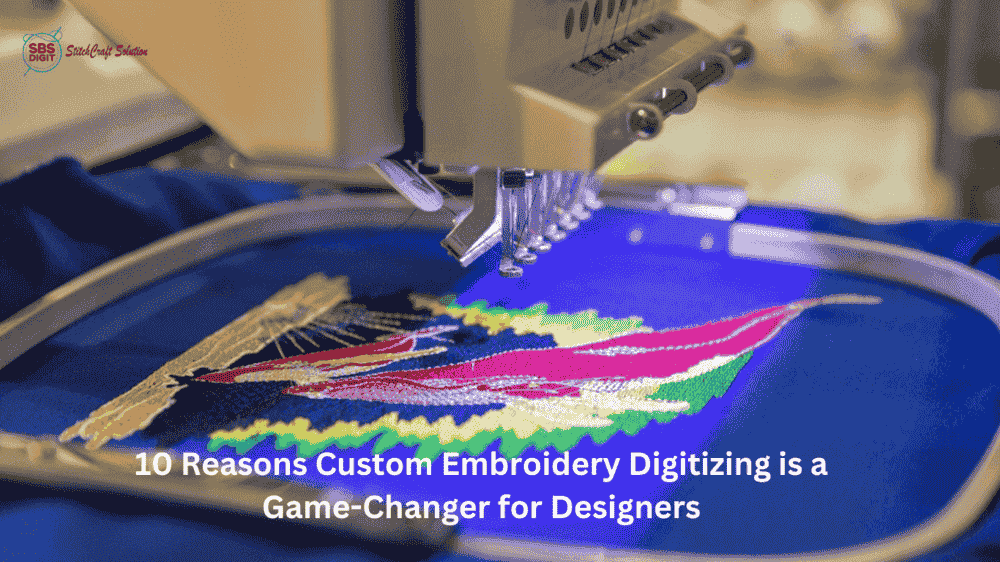In the dynamic world of textile design, embroidery digitizing has emerged as a transformative craft, blending traditional artistry with cutting-edge technology. Whether you’re a hobbyist, a business owner, or a design professional, mastering embroidery digitizing opens up limitless creative possibilities. In this guide, we’ll explore the essential techniques, tools, and industry insights that can help you perfect your digital stitching game.
What is Embroidery Digitizing?
Embroidery digitizing is the process of converting artwork into a digital file that an embroidery machine can read and stitch. Unlike simple image conversion, this process requires skill and precision, ensuring that every stitch placement, thread color, and texture reflect the original design intent. The result is a high-quality embroidered piece that mirrors the digital artwork accurately.
Key Techniques in Embroidery Digitizing
To achieve professional results, digitizers must understand and apply a variety of techniques. Here are some of the most important:
1. Pathing and Stitch Order
Effective pathing determines the order in which the machine stitches each part of the design. A logical stitch order minimizes thread trims and jump stitches, resulting in cleaner, faster production.
2. Underlay Stitches
Underlays serve as the foundation of any embroidery design. These preliminary stitches stabilize the fabric, helping the top stitches sit better and ensuring a smooth, consistent finish.
3. Density Management
The density of stitches affects the final look and feel of the embroidery. Too much density can lead to puckering, while too little can create a patchy appearance. Mastering density control is crucial for balanced results.
4. Compensation for Fabric Type
Different fabrics respond differently to stitches. A skilled digitizer adjusts the design settings to accommodate the stretchiness or thickness of each fabric, ensuring accurate and durable embroidery.
Essential Tools for Embroidery Digitizing
Beyond techniques, having the right tools is essential to success in embroidery digitizing.
1. Digitizing Software
Professional digitizing software like Wilcom, Hatch, or Pulse offers robust tools for creating and editing embroidery files. These programs provide precise control over every aspect of the design, from stitch types to layering and color management.
2. Graphics Tablet
A graphics tablet allows for more fluid, hand-drawn design input. This is especially useful for custom or freehand embroidery work.
3. High-Resolution Monitors
Clear visuals are essential when working with intricate designs. A high-resolution monitor helps spot small details and make accurate adjustments during the digitizing process.
4. Machine Compatibility Tools
Different embroidery machines require different file formats. It’s important to have access to conversion tools and format libraries that ensure your design works seamlessly with various brands and models.
Finding the Right Embroidery Digitizing Services in the USA
For businesses and individuals looking to outsource this craft, partnering with experienced embroidery digitizing services in the USA offers many advantages. Local services often provide faster turnaround times, clear communication, and a better understanding of industry standards.
Moreover, many reputable providers now offer free embroidery digitizing trials or sample conversions to showcase their quality. This allows you to evaluate their work before making a long-term commitment.
Tips for Choosing the Best Service Provider
If you’re not ready to dive into the technical aspects yourself, selecting the right service partner is crucial:
- Check Reviews and Portfolios: Look at past work to assess quality.
- Inquire About Software and Machines Used: The right tools can make a significant difference in output.
- Ask About Customization Options: A good provider should tailor the design to suit your specific fabric and garment.
- Evaluate Customer Support: Responsive support ensures smoother communication and better outcomes.
The Benefits of Mastering Digitizing Yourself
While outsourcing can save time, learning the craft of embroidery digitizing yourself offers long-term advantages:
- Creative Control: Bring your vision to life exactly how you imagined it.
- Cost Savings: Save on digitizing fees for each design.
- Brand Consistency: Maintain uniform quality and design across all products.
There are many free resources and online tutorials to help you get started. Some software platforms even offer free embroidery digitizing features or trials for beginners to practice before committing to a purchase.
Conclusion
Embroidery digitizing is both an art and a science. With the right techniques, tools, and mindset, you can elevate your textile creations to a professional standard. Whether you choose to learn the craft yourself or rely on expert embroidery digitizing services in the USA, understanding the fundamentals is key to achieving impeccable results.



